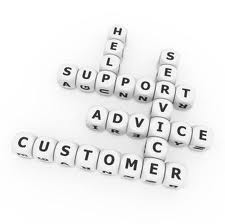The problem we are looking to solve is the change in realizing a 360 degree view of your customer for the medical devices industry. Most companies that I deal with are struggling with leveraging customer relationship management (CRM) solutions that live in the cloud versus the traditional ‘on-premise’ applications. In this blog post I will give for you a set of questions to ask so that you can select an IT service provider to help you navigate the technology choices to help your organization reach this goal.
of your customer for the medical devices industry. Most companies that I deal with are struggling with leveraging customer relationship management (CRM) solutions that live in the cloud versus the traditional ‘on-premise’ applications. In this blog post I will give for you a set of questions to ask so that you can select an IT service provider to help you navigate the technology choices to help your organization reach this goal.
Why medical devices and not pharmaceuticals? Within the business of medical devices you have the normal sales force activities to place your products and services. You also have a service management aspect of medical devices where equipment must be serviced and maintained. The clients I work with are the IT folks that are responsible for ensuring that technology is in place to support the organization, and it is the business that is driving the choice for technology. Ultimately I want to share some pointers on what to ask for to reach a better view of your customer with the right technology.
Background
Let’s begin with how today’s IT solution’s have evolved? ERP solutions have been where customer data has been stored and where sales orders are entered. CRM was an extension of the sales order taking process along with added enhancements for a variety of business activities. Medical device companies have added ‘service management’ activities that are managed. This ranges from dispatching service technicians to service order status and contract management. I also recognize that there is a lot of other activities. The goal for technology was to offer a better view into customer services and a more complete view of your customer. 
Can your CRM deliver on a view of your customer?
I came across a great article of “What exactly is a 360-degree view of the customer?”
“The term a “360-degree view of the customer” has been used in the industry for several years. But what exactly does it mean, and what information would you actually display on the agent desktop?
Whenever a customer interacts with an organization, it is vital that the richness of information available on that customer informs and guides the processes that will help to maximize their experience, while simultaneously making the interaction as effective and efficient as possible. This includes everything from avoiding repetition or re-keying of information, to viewing customer history, establishing context and initiating desired actions.
A true 360-degree view needs to include views of the past, present and future:
- The past means providing a meaningful and easily digested view of the customer’s history. This includes product or policy activity, interaction history across all channels, including community, recent product views, campaign activity and process history.
- The present requires presenting key customer information about who they are and how they relate to your organization, but also requires determining the context of the call. Is there a recent order or current fault, why are they interacting with us now?
- The future relates to actions that can be initiated to guide the future of the relationship. Is the customer likely to churn? Are there up-sell or cross-sell opportunities or targeted messages to bring in at this time?
Delivering on the 360-degree view is not simply about having a unified database of all activity, but rather being able to pull together the pieces of information that are relevant for a specific customer and specific interaction into an intuitive workspace for the agent or the customer.”
Today’s choices
CRM Sales force automation (SFA) has several solutions that business folks can readily adopt. They include Saleforce.com and Veeva. They give a cloud based solution that can easily do all the functions of gathering ‘present’ day information around your clients and prospects. They also offer the flexibility to offer reports and data so that account reps can easily access via their mobile devices. This puts the traditional ERP packages at a distinct disadvantage because they cannot be easily upgraded with similar functions. Customizing these applications is not a cost effective solution.
The key for many folks considering these solutions is the total cost of ownership (TCO) between the ‘on-demand’ versus the traditional applications. Keep in mind the annual maintenance costs can be higher than expected for some of these applications and there is a cost around developing “integration” points between these packages for your key business processes.
CRM Service Management (SM) from the ERP vendors has all the necessary integration so that your customers can get information not only on their service orders they can use data on the products they own. Customer service agents can easily dispatch field service reps and they can get access to data on the nature of the repair or service needed before the customer site visit. This can happen today because most IT solutions have extended their solutions to work with today’s mobile applications.
So far there are very few customer implementations of ‘on-demand’ service management. Be sure to ask for references when someone tells you they’ve done this in the past.
How to realize a 360 degree view of you customer?
 The clients I speak with today have multiple systems that the organization must use to gain this insight. First start by organizing the key items you want your field folks to have to ‘improve’ customer satisfaction? You need to think through ‘business process interaction.’ What do you need from your SFA application and your SM application for a given business process outcome. Remember it is not just present day information your looking to have, it is this plus history and future data around expiring contracts and new service programs that will help your customer facing folks be more ‘effective.’
The clients I speak with today have multiple systems that the organization must use to gain this insight. First start by organizing the key items you want your field folks to have to ‘improve’ customer satisfaction? You need to think through ‘business process interaction.’ What do you need from your SFA application and your SM application for a given business process outcome. Remember it is not just present day information your looking to have, it is this plus history and future data around expiring contracts and new service programs that will help your customer facing folks be more ‘effective.’
I would ask your IT service providers the following questions:
- Share examples of where you’ve done Best Practices or Business Process assessments around either sales force automation and/or service management?
- Do you have capabilities with ‘on-demand’ applications like Veeva or Salesforce.com?
- What kind of ability does your firm have around the ‘on-premise’ applications (SAP, Oracle and Microsoft)?
- Do you have industry expertise in Medical Devices?
- Can have you done ‘benefits’ or ‘value’ realization assessments?
My clients are asking for help because the business as asking for change. The business wants to sell more and yet they may not have all the tools necessary to deal with your customers. Asking these questions of your IT service providers can help you find the needed help in reaching a 360 degree view of your customer.
Thanks,
Jim
